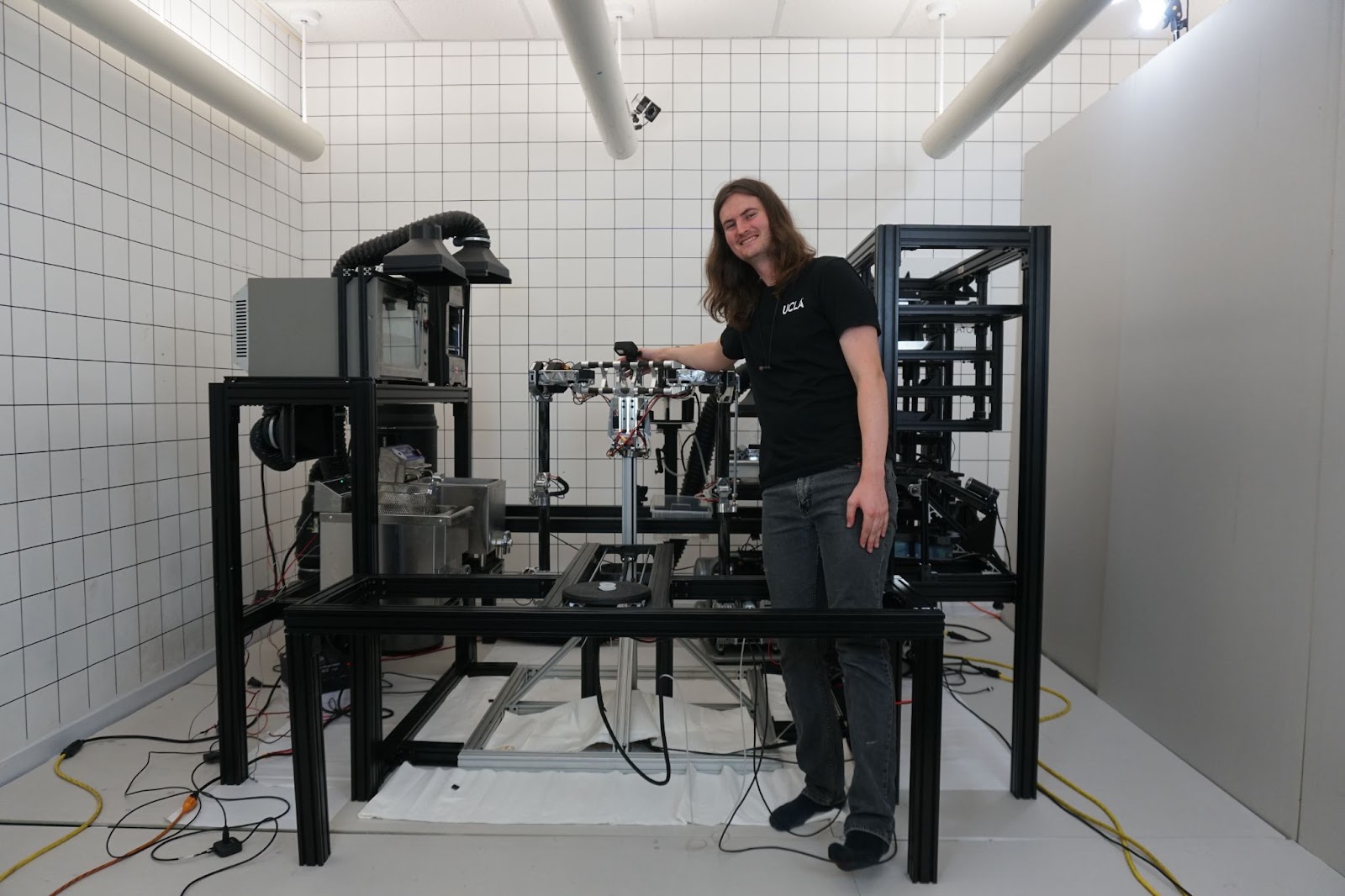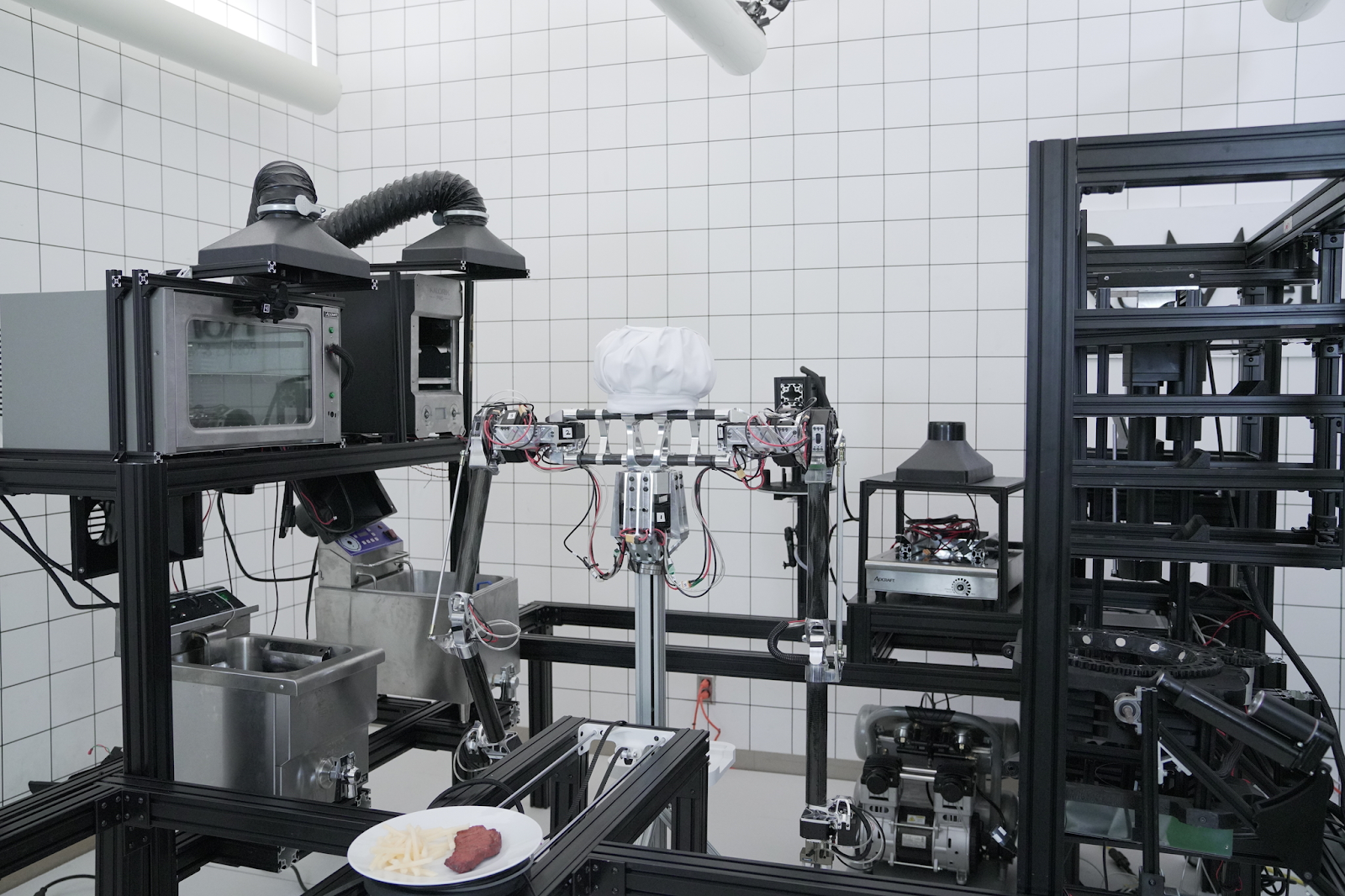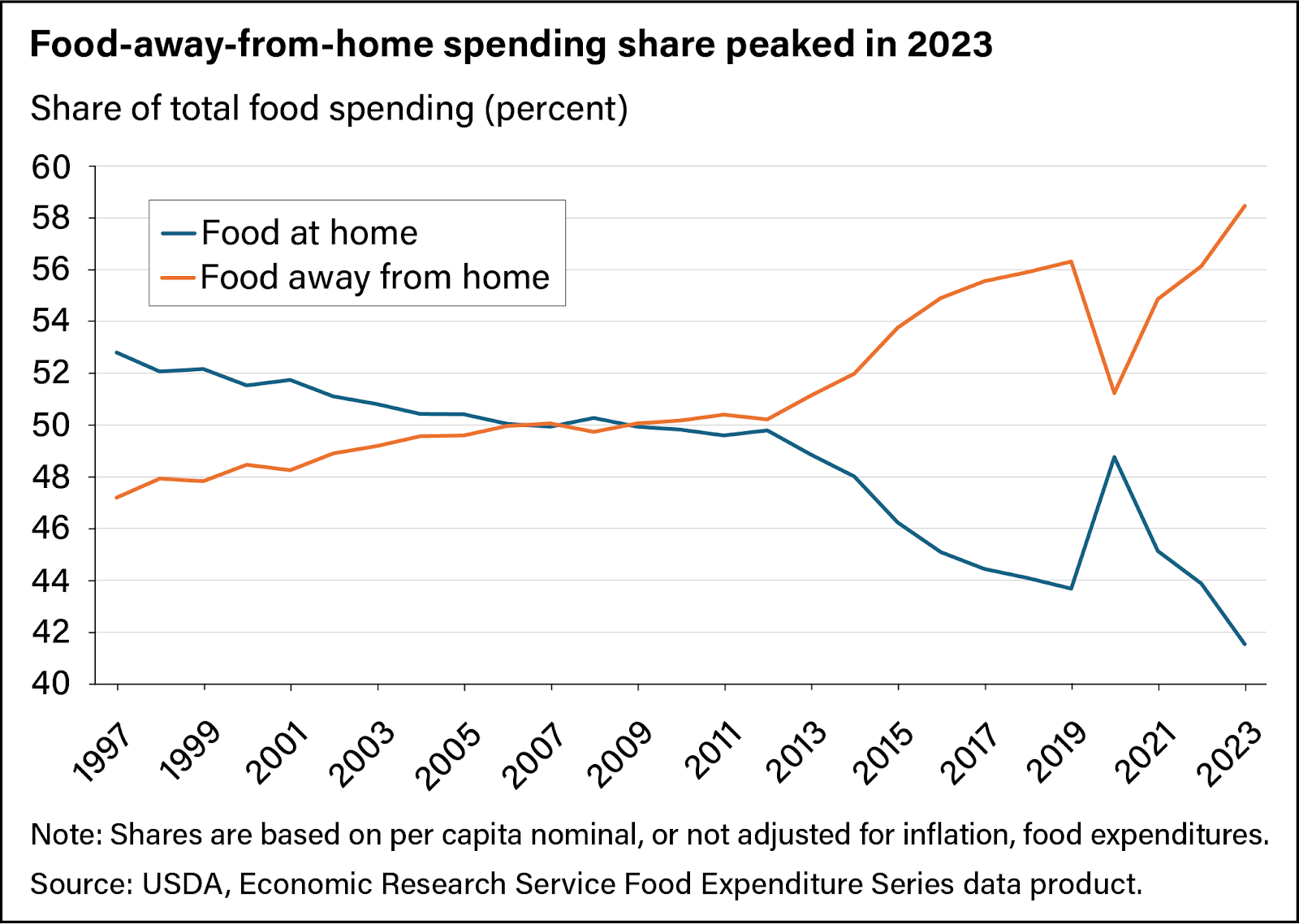I Couldn’t Be an Iron Chef - So I Learned to Build One
Kay Gillespie

Reimagining Robots in the Kitchen
Growing up, I was almost never in the kitchen. Between my poor dexterity, jittery hands, and limited sense of smell; cooking was often a task I found frustrating at best and potentially dangerous at worst. When I began my journey as a PhD student in mechanical engineering at UCLA’s Robotics and Mechanisms Lab (RoMeLa), I never imagined I would spend the next four years dedicated to designing and building robots for kitchens. I enjoyed the challenge of creating technology that could cook for me, particularly when they were cooking tasks I didn’t enjoy.

YORI Robotic Kitchen System
My first taste of culinary robotics was with the YORI robotic kitchen system developed in partnership with Woowa Bro’s, a Korean Food Delivery app. YORI focused on creating a modular and fully autonomous kitchen capable of cooking and plating nearly any dish. Using novel proprioceptive motors capable of withstanding high impacts and operating with precise force control, enabled us to create robotic arms capable of making fast and precise cuts with a knife. New approaches to sensor fusion allowed us to analyze gasses, effectively giving the robot a sense of smell, to determine if a dish was fully cooked. I found that through clever and careful design I could open the doors to culinary possibilities I had previously written off.

Whether differently abled, pressed for time or resources, or simply uncertain how to start; as a population we are trending away from cooking at home and towards eating out. The US Department of Agriculture (USDA) found 2023 marked the highest recorded share of consumer spending on Food-Away-From-Home at over 58% of total food spend. Higher demand for eating out combined with rising food and labor costs, has put restaurants in a bind, needing to do more with less. Robots can aid restaurants in fighting these headwinds through an ecosystem of smart appliances and robotic assistants. Creating modular and compact solutions in back-of-house allows restaurants to choose the best configuration for their concept and allow for continuous innovation over time. I don’t believe humans will or should be taken out of the kitchen, but I do envision robots handling the dull, dangerous, and dirty tasks. Meanwhile restaurateurs and chefs can be free to use their additional time and energy towards more fulfilling culinary pursuits. Happy chefs make delicious food.
How We See the Future of Restaurants
The restaurant robotics field has seen the introduction of multiple products and ventures; however, restaurant kitchens have not seen widespread adoption. Most cooking robots focus heavily on hype and cool demos with a price tag untenable for most restaurants. The primary goal with many of these products seems to be the robot behind the counter, not so much the food being produced. At Pinto, we believe that this focus should be swapped, robots should quietly work in the background while workers are brought to the forefront providing the quality of service only human connection and innovation can deliver. We aim to empower our customers with modern technology, not to replace labor, but to ease, enhance, and extend it.
I still don’t spend much time in the kitchen; but, through robotics, I can now help talented chefs make amazing food. I look forward to helping your restaurant adopt practical solutions too.
